Environmental Policy & Plan
Committed to acting decisively on climate and biodiversity issues

The Queens' College Environmental Policy outlines our commitment to act decisively on the climate emergency, by mitigating our contribution to the climate emergency and crisis in biodiversity. In practical terms, this means reducing the College’s carbon footprint and waste output and improving biodiversity on the College site.
It establishes four goals:
1. To reduce the College's net overall carbon footprint by 50% from its 2020 level by 2030 and to net zero by 2045.
2. To manage all activities, buildings and estates to promote environmental sustainability, to conserve and enhance natural resources and to reduce environmental pollution.
3. To balance the needs of current members and staff against those of the future.
4. To collect, audit and publish data regarding the College's environmental impact.
Plan
To monitor progress towards these goals, the College has developed an Environmental Plan. The plan outlines College activities, projects, operations and change initiatives which will help promote environmental sustainabaility, aiming to highlight progress against the aspirations of our environmental policy and to encourage continual improvement in our environmental performance.
The main goals outlined in the plan are:
- Reduce energy consumption, especially of energy derived from fossil fuels, in all College property.
- Maximise the proportion of waste that is recycled and minimise the quantity of non-recyclable refuse.
- Ensure that improvements, purchases and developments are environmentally sound.
- Minimise the use of unsustainable transport by its staff and students.
- Minimise consumption of water.
- Preserve and promote the characteristic biodiversity of the College for present and future students, visitors and staff.
- Ensure that the environmental policy is enacted, enforced and reviewed.
Environmental Committee
The Queens’ College Environmental Committee consists of Fellows, staff member and student representatives from the JCR and MCR and meets once a term. The committee will monitor progress made towards the aims of our environmental policy and continally review the measures of the plan, ensuring that our efforts are working and considering other actions that could be taken to accelerate progress.
Additional initiatives
There are a number of other initiatives in College towards the main aims of the policy, including:
- Decarbonisation live projects
- Dedicated officers on both the MCR and JCR, with teams formed of members across both student bodies
- Biodiversity plans for Owlstone Croft
- Our students are involved in the Green Impact Challenge - a university-wide challenge - on behalf of Queens'
- Queens' College heating schedule 2022
- A dedicated Queens' Nature and Environmental Society, to gather enthusiasm and support for student-led initiatives in the College
Road to Net Zero

Introduction
One of the key goals within the Queens’ College Environmental Policy is 'to reduce net overall carbon footprint by 50% from its 2020 level by 2030 and to net zero by 2045'.
To help us meet these targets, Max Fordham LLP was engaged to produce an energy assessment and decarbonisation strategy to capture our baseline position and identify a road map to delivering the carbon reduction aspirations.
The study and emerging strategy is based on scope 1 and 2 emissions linked directly to the College's energy use and energy purchasing. Indirect scope 3 emissions linked to investments, goods purchasing and travel will be reviewed as a separate exercise.
See the full decarbonisation assessment and brief that was presented to the Fellows of the College.
Current Position
In 2018 the total scope 1 and scope 2 carbon emissions were approximately 2,050 tonnes CO2e/annum. This sets the baseline starting point to define a decarbonisation strategy for Queens' College.
Unsurprisingly for the type and age of buildings found at Queens' College, provision of space heating is the dominant energy demand, comprising 46% of the total across both on and off site properties.
Scope 1 emissions due to combustion of natural gas for space and water heating accounts for 75% of the total emissions. Carbon emissions resulting from operating vehicles, equipment and refrigerants account for approximately 2%.
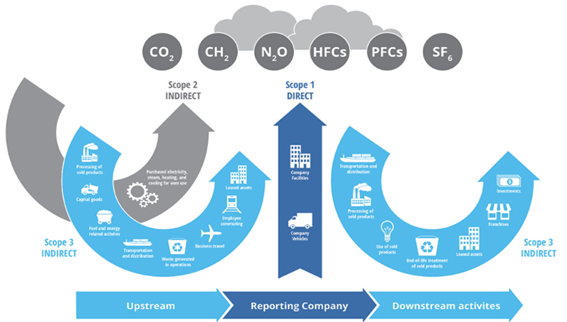
Figure 1: Emissions Classification
Figure 1: Emissions Classification
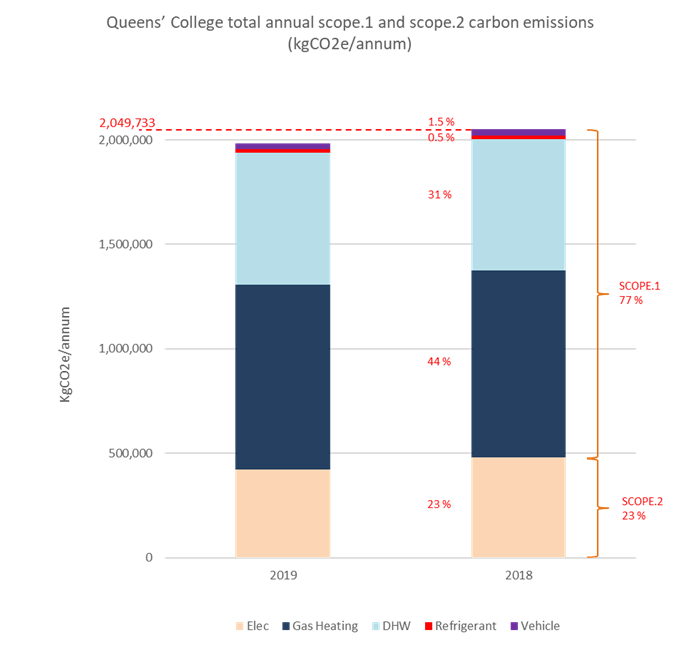
Figure 2: Total Carbon Emissions Baseline
Figure 2: Total Carbon Emissions Baseline
Roadmap to Net Zero
1. Focus on Clean Energy
The carbon intensity of grid electricity is changing all the time as new renewable electricity generating capacity is brought on-line, new nuclear power stations are commissioned and older, coal fired power stations are decommissioned.
The focus of any robust decarbonisation strategy should be to move energy consumption from natural gas to electricity. Not only is the carbon content of National Grid electricity ever decreasing, but eliminating local combustion of fossil fuel completely is better for local air quality.
Our proposed decarbonisation strategy for Queens’ College is to replace the existing gas fired boilers with electrically powered heat pumps and to focus on clean electricity supply.
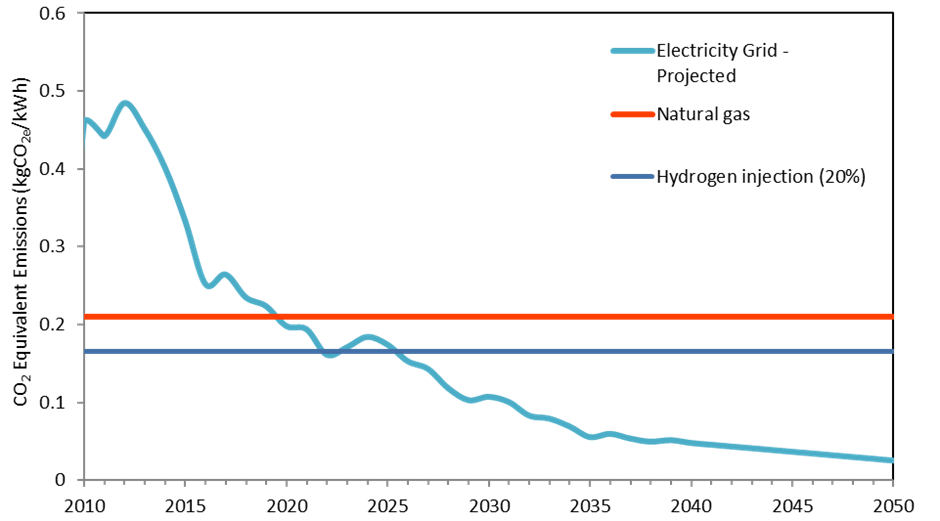
Figure 3: Projected carbon intensity of National Grid electricity and Natural Gas
Figure 3: Projected carbon intensity of National Grid electricity and Natural Gas
2. Focus on Demand Reduction:
We propose to carry out the following sequence of improvements to reduce energy demand within our existing buildings:
Fabric improvements: Upgrade windows. Insulate walls where practicable. Insulate roofs and ground floor slabs where possible.
Efficient Equipment: Replace life expired boiler equipment with heat pumps (both air and river source). Install mechanical ventilation with heat recovery where possible to recover up to 85% of extracted heat.
Active management and monitoring: Monitor and maintain buildings to ensure they are operating efficiently. Educate occupants on best practises to avoid wasting energy. Install low flow hot and cold water appliances, reduce heating set points, remove parasitic loads and invest in high efficiency white goods.

Figure 4: Demand Reduction Sequence
Figure 4: Demand Reduction Sequence
The combined effect of the proposed fabric improvements and de-gasification have been modelled to quantify the reductions in energy consumption and carbon emissions.
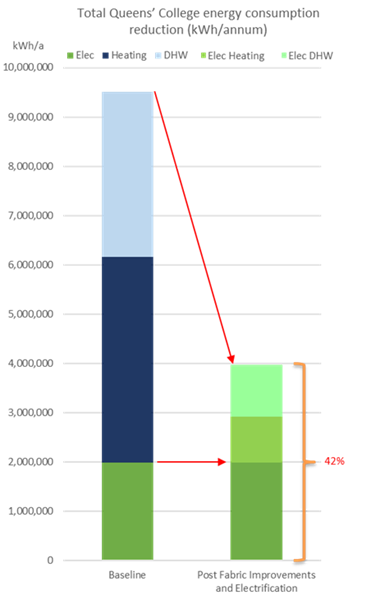
Figure 5: Combined effect of fabric improvements and degasification on energy consumption and carbon emissions
Figure 5: Combined effect of fabric improvements and degasification on energy consumption and carbon emissions
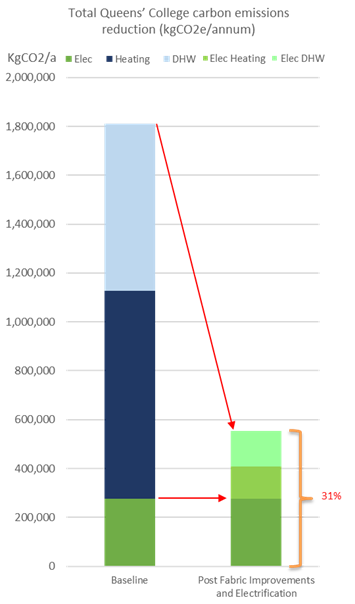
Project Planning
We have planned a timetable of refurbishments and upgrades over the next 23 years with a view to achieving as close to net zero as possible.
A 70% reduction in carbon emissions can be achieved by 2030 and a 95% reduction by 2045 with residual emissions of approximately 84 tonnes CO2e per annum by that date. By 2050 the residual carbon emissions should drop to just less than 20 tonnes due to the projected decarbonisation of the National electricity grid.
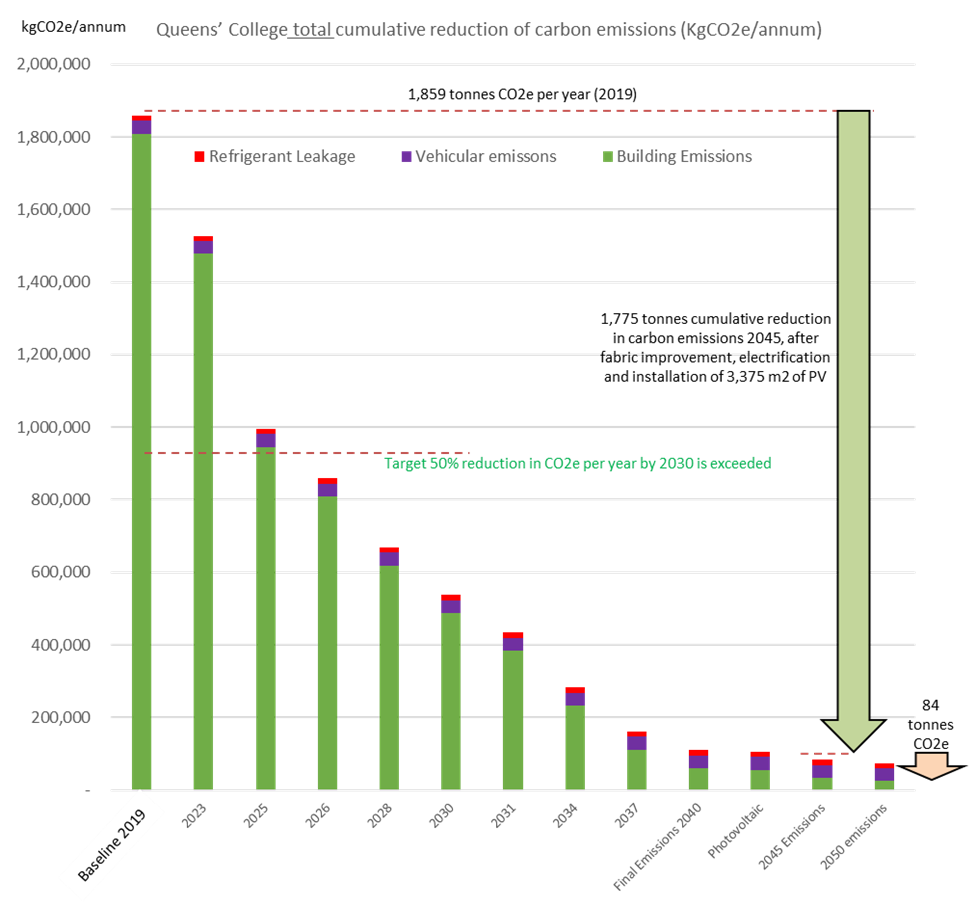
Figure 6: Cumulative reduction of carbon emissions
Figure 6: Cumulative reduction of carbon emissions
